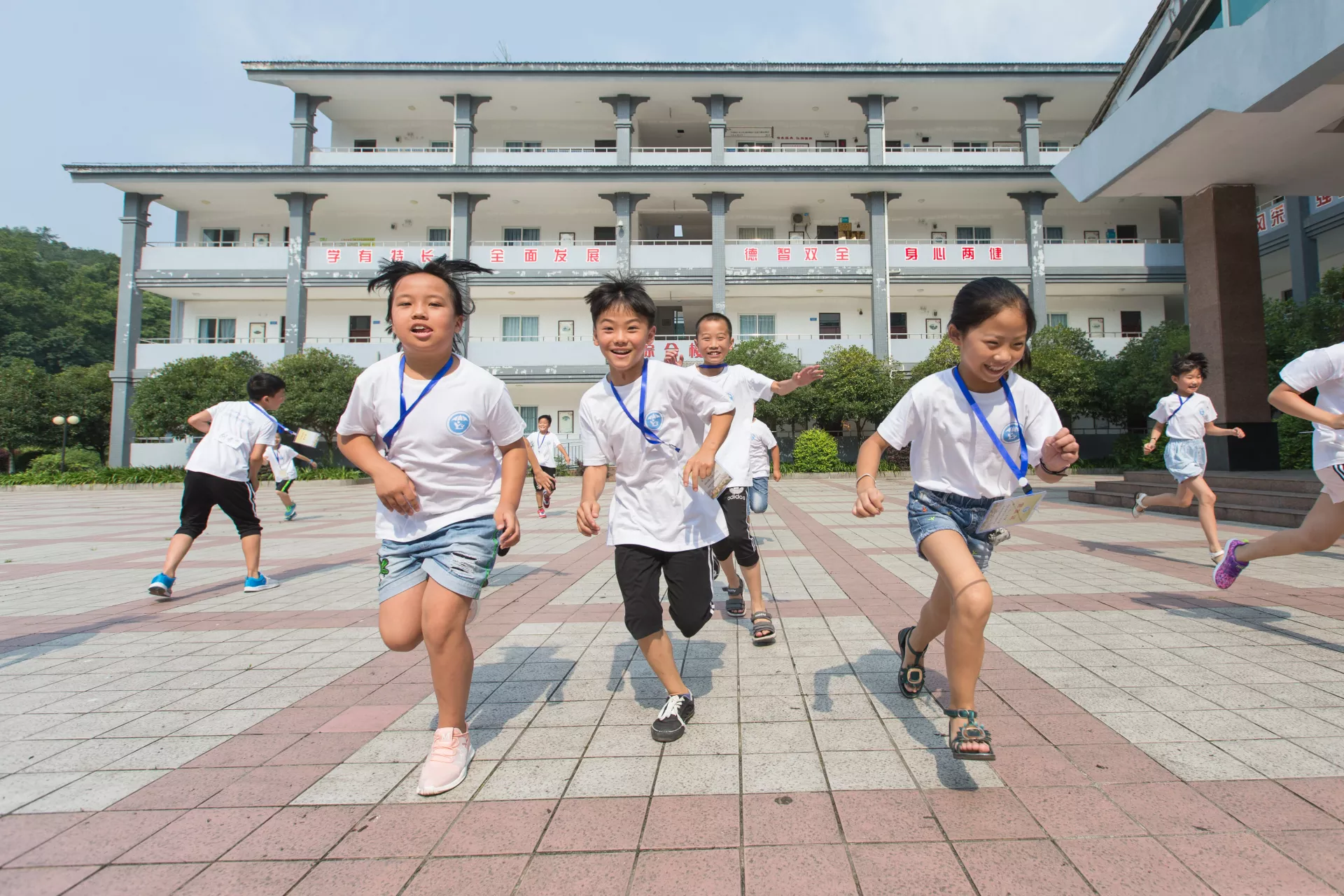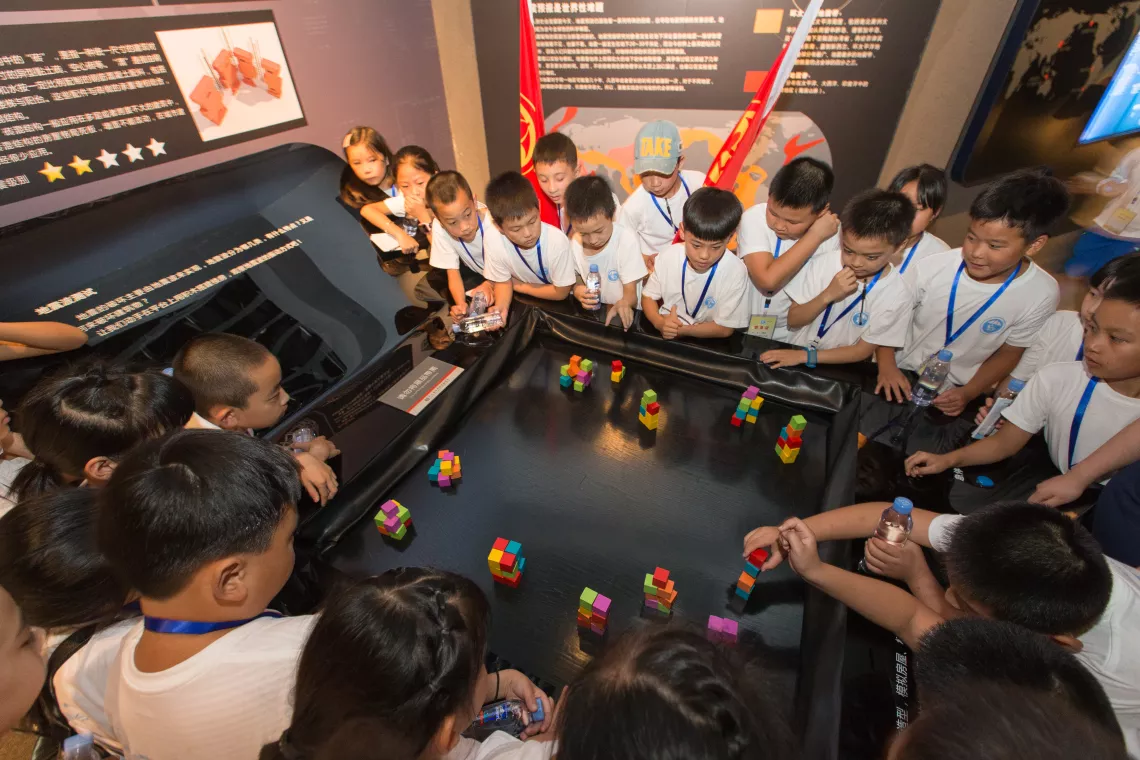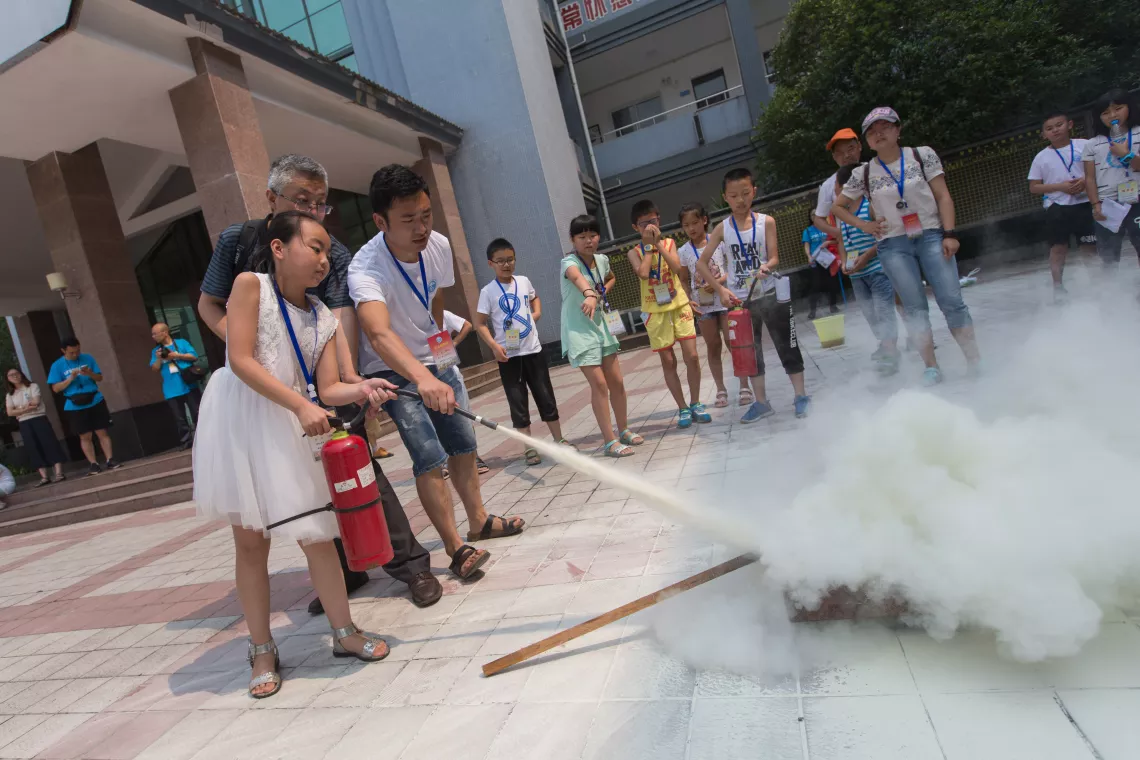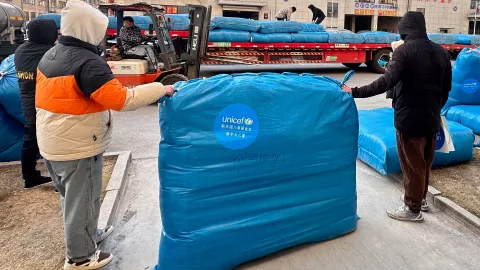Summer camp explores a participatory and engaging approach for disaster risk education
Disaster Risk Reduction

Wang Yitong, 10, has been told many times by her mother how they survived the magnitude 8.0 earthquake in Sichuan Province almost a decade ago.
Back then, Yitong was around six months old. When the earthquake struck at 2:28 pm on 12th May 2008, Yitong and her mother were napping in their bedroom in Shifang, a city 70 kilometres from the epicentre.
Awakened by the tremor, Yitong's mother grabbed her and immediately took her downstairs to the yard. Realizing she hadn't brought any belongings, she rushed back to the building to fetch warm clothes for Yitong before taking her to an open field.
The powerful earthquake killed more than 6,000 people and injured 33,000 in Shifang alone. More than 480,000 houses in Shifang were flattened in the disaster, while 1.5 million were damaged. The mountainous regions of Shifang bore the brunt, with 95 per cent of houses reduced to rubble or severely damaged. Schools were among the worst affected. A total of 48 schools in Shifang were destroyed, killing 597 teachers and students and injuring more than 2,800.[1]
Although Yitong doesn't remember the earthquake, her mother's account of the disaster still terrifies her. And she is not alone.
To increase emergency preparedness and resilience in China, prevent the loss of life and minimize the negative social and economic impacts of disasters on vulnerable children, their families and communities in disaster-prone areas, UNICEF and several government agencies launched the Disaster Risk Reduction (DRR) Model Building Pilot Programme in Western China in August 2016.
The project is being implemented in seven counties in Sichuan Province, all prone to disasters. It aims to increase DRR knowledge at the local level, particularly in schools, communities, and health facilities, as well as to improve coordination among different sectors (education, health, and child protection) to provide essential services and strengthen awareness of disaster risks and preparedness.


“Disasters negatively impact children's and women's rights, disproportionately affect poor regions, erode development gains and set back progress in poverty eradication. They exacerbate already existing vulnerabilities and inequalities of boys and girls in disadvantaged regions,” says UNICEF Deputy Representative to China, Dr. Douglas Noble. “The Disaster Risk Reduction model represents a shift from a reactive to a proactive approach. With disaster risks systematically identified, assessed and addressed, we can make children and communities more resilient.”
After the Sichuan earthquake, Life Safety Education, which includes the component of disaster risk education, has been added to the school curricula across Sichuan Province, however, the lack of investment is hampering the satisfactory delivery of the course.
“A baseline survey conducted in three project sites – Shifang, Beichuan and Mianyang – in 2016 found out that few trainings were provided to the teachers for Life Safety Education, and only 4 percent of them are full-time, thus constraining the quality of the course.,” says Zeng Xiangyi, a project manager from the National Centre for Educational Technology, a partner agency for the DRR project.
“Disaster risk education is only one part of the project. By designing targeted activities for school managers, teachers and students, we aim to raise awareness of disaster-related risks and strengthen the capacity for disaster preparedness, prevention and mitigation in all schools in the project counties through the comprehensive school safety approach,” Zeng adds.
This summer, Yitong and around 90 other children aged from 9 to 12 joined a four-day summer camp, which is part of the DRR programme, held in Shifang to gain knowledge about disasters as well as self-protection and mutual assistance skills, and practise those skills in a real-life simulation. A similar activity was also held in Beichuan County, another region heavily affected in the 2008 quake.
The children visited the Sichuan Disaster Prevention and Reduction Museum in Chengdu City, and learned how to protect themselves in various disaster scenarios, such as earthquakes, landslides and floods. They also learned some first aid skills through engaging activities.
Inside an earthquake simulator, the children had a safe, yet realistic experience of the intense shaking that can occur during an earthquake. Under the instruction of a museum guide, they crouched down and covered their heads with their arms.
“There are three types of seismic waves – primary waves, secondary waves and surface waves. Now who can tell me which one is the most devastating?” asked the guide.
After the children each gave their answer, the guide led them to a seismic wave simulator and asked them to pile up building blocks on the surface of the simulator, and then pressed the buttons to simulate different types of waves. The children were amazed to find out that the building blocks shook when primary and secondary waves were simulated but still held together. They finally collapsed as a result of forces exerted by surface waves.

This participatory and engaging approach was applied throughout the summer camp.
Guided by Professor Yang Saini from Beijing Normal University, the children and teachers, who were divided into groups, mapped out risks in their community and developed emergency plans through lively discussions and debates. Each child was involved in the process and volunteered to present the results to the class.
Professor Yang highlights that research indicates that the awareness of how to protect and save oneself, as well as mutual assistance, are essential during all forms of disasters, especially earthquakes. “We hope everyone in the community knows where to go and what to do in the face of a disaster. If we can equip community members with sufficient awareness and knowledge on DRR, we are more likely to save more lives and minimise the losses.”
“Though all the schools now have disaster risk education in their curricula, it has very limited impact as it is all about rote learning. We hope that through this participatory approach, these children can embrace the idea of disaster risk and gain some problem-solving skills while teachers could be inspired to change their teaching methods, and when they go back to school, they can pass on what they learned to more students and teachers,” says Professor Yang. “More importantly, through the pilot activities, we hope to develop a set of participatory and exploratory approaches to make disaster risk education more lively and engaging, therefore more children will benefit from it.”
One practical skill the children could try out at the camp was learning how to use a fire extinguisher. With the help of their teachers, they each put out a fire.
“When a fire breaks out, I can use a fire distinguisher to put it out and protect my family,” Yitong says proudly. “At class, we gained some knowledge about self-protection, but we never put it into practice, so I had no idea whether it was useful. Here at the camp, we not only learned how disasters happen, but also tried out life-saving skills. This is so different from what we learned at school.”
“And now I know Mum shouldn't have returned to the building during the earthquake. She should have taken me to the open field right away,” she adds.
“This is exactly what we envisioned for the summer camp. We believe that by educating a child about disaster risks and empowering the child to use that knowledge, we can bring happiness to a family by minimizing the risks imposed by disasters and benefit society at large,” Zeng from the National Centre for Educational Technology says.
[1] Shifang.gov.cn: http://www.shifang.gov.cn/default/news/shownews/20111220170029997/200807079860.html



